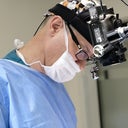Unfortunately there have been no definitive studies performed to answer this question. I am part of a team that is developing patient reported outcomes measures to help measure patient satisfaction after facial aesthetic treatments. Hopefully we will have real data to answer this question for you in a few years.




